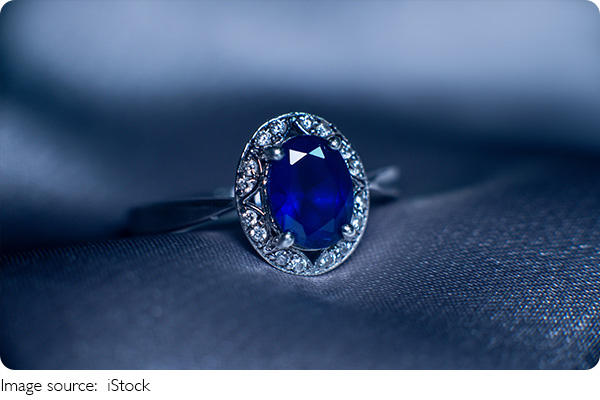Zircone or Diamond?

When it comes to selecting gemstones, the debate between zircon and diamond is one that has sparked curiosity among jewelry lovers for years.
While both gems share a captivating allure, they differ in several significant ways—from their composition and hardness to their brilliance, price, and symbolic value.
Understanding these differences can help you make a more informed decision when choosing the right gem for your jewelry collection or special occasion. In this article, we will explore the key characteristics of zircon and diamond, highlighting their unique qualities and helping you understand what sets them apart.
Zircon vs. Diamond: Understanding the Differences
1. Distinguishing Characteristics
Diamonds: Composed solely of carbon atoms, exhibiting a tetrahedral crystal structure that imparts extreme hardness and durability.
Zircon: Comprised of zirconium silicate, featuring a tetragonal crystal structure with possible traces of uranium and thorium.
2. Hardness Distinction
Diamonds: Boasting a Mohs scale rating of 10, making them the hardest mineral known, capable of scratching any other material.
Zircon: Possessing a hardness of approximately 7.5 on the Mohs scale, offering resilience but susceptible to scratches from harder materials like corundum and, of course, diamonds.
3. Luster and Brilliance
Diamonds: Recognized for their adamantine luster and high refractive index, giving them unparalleled brilliance and fire.
Zircon: Showcasing a vitreous luster and lower refractive index. While bright, it does not attain the same level of intensity as diamonds.
4. Price Variation
Diamonds: Often priced significantly higher than zircons due to their rarity, hardness, and status.
Zircon: Featuring a much lower price tag, making it a popular choice for accessible jewelry.
5. Unique Aspects
Diamonds: Exhibiting a diversity of hues from colorless white to various rare shades like yellow, brown, blue, pink, etc.
Zircon: Available in different colors including blue, yellow, green, red, and transparent, with colorless zircons commonly serving as diamond substitutes.
6. Usage and Wear
Diamonds: Due to their extreme hardness, diamonds are highly resistant to wear and scratches, ideal for daily wear in items like engagement rings.
Zircon: While resilient, zircons are more prone to scratches and chipping compared to diamonds, showing signs of wear over time.
The Allure of Zircon
1. Exploring Zircon's Appeal
Zircon is a natural gem cherished as a more affordable alternative to diamonds, boasting visual similarity and unique beauty. Its wide array of colors and captivating luster make it perfect for those seeking an elegant accessory without compromising on sophistication.
2. Zircon Durability
With a Mohs hardness of around 7.5, zircon proves sturdy enough for jewelry use. However, being less hard than diamonds, it may get scratched when exposed to harder materials, requiring specific care.
3. Lustre and Brilliance of Zircon
Zircon is distinguished by its vitreous luster and high dispersion, allowing it to sparkle under light with splendid color play. While not reaching the same brilliance as diamonds, it maintains a luminous and captivating charm.
Concluding Thoughts
Overall Comparison
While zircons can serve as a good choice for those seeking a temporary or budget-friendly jewelry option, the long-standing expertise of Torinogioielli demonstrates that in Italy, the most cherished choice for an engagement ring remains the natural diamond.
This preference goes beyond mere status or aesthetics, symbolizing a deep symbolic gesture, a testament to the importance attributed to the lasting authenticity of a piece representing eternal love.
Value and Symbolism
Despite zircons being an economical option, the natural diamond has always held a prominent position for those desiring a significant and enduring piece of jewelry. The brilliance, resilience, and historical charm of natural diamonds are unmatched by zircons, as evident to those with decades of experience like Torinogioielli. Zircons simply do not offer the same depth of symbolism.
Appraising Zircon's Worth
Factors Influencing Value
The value of zircon can significantly fluctuate based on decisive factors like color, purity, cut, and carat weight.
While commonly used as a cost-effective diamond alternative, zircon holds its specific value and, in some high-quality varieties, can present an intriguing option for enthusiasts and collectors.

Procuring a Duplicate with Zircons
While exclusively utilizing diamonds for solitaire rings, Torinogioielli understands the client's need for a faithful copy of their precious ring. In these instances, offering to craft a replica of the original solitaire using zircons allows for an aesthetically similar duplicate while maintaining the safety and integrity of the original diamond.
The emphasis on quality, ethics, and customer satisfaction at Torinogioielli ensures a transformative experience tailored to the client's vision.

 · Fashion Team
· Fashion Team